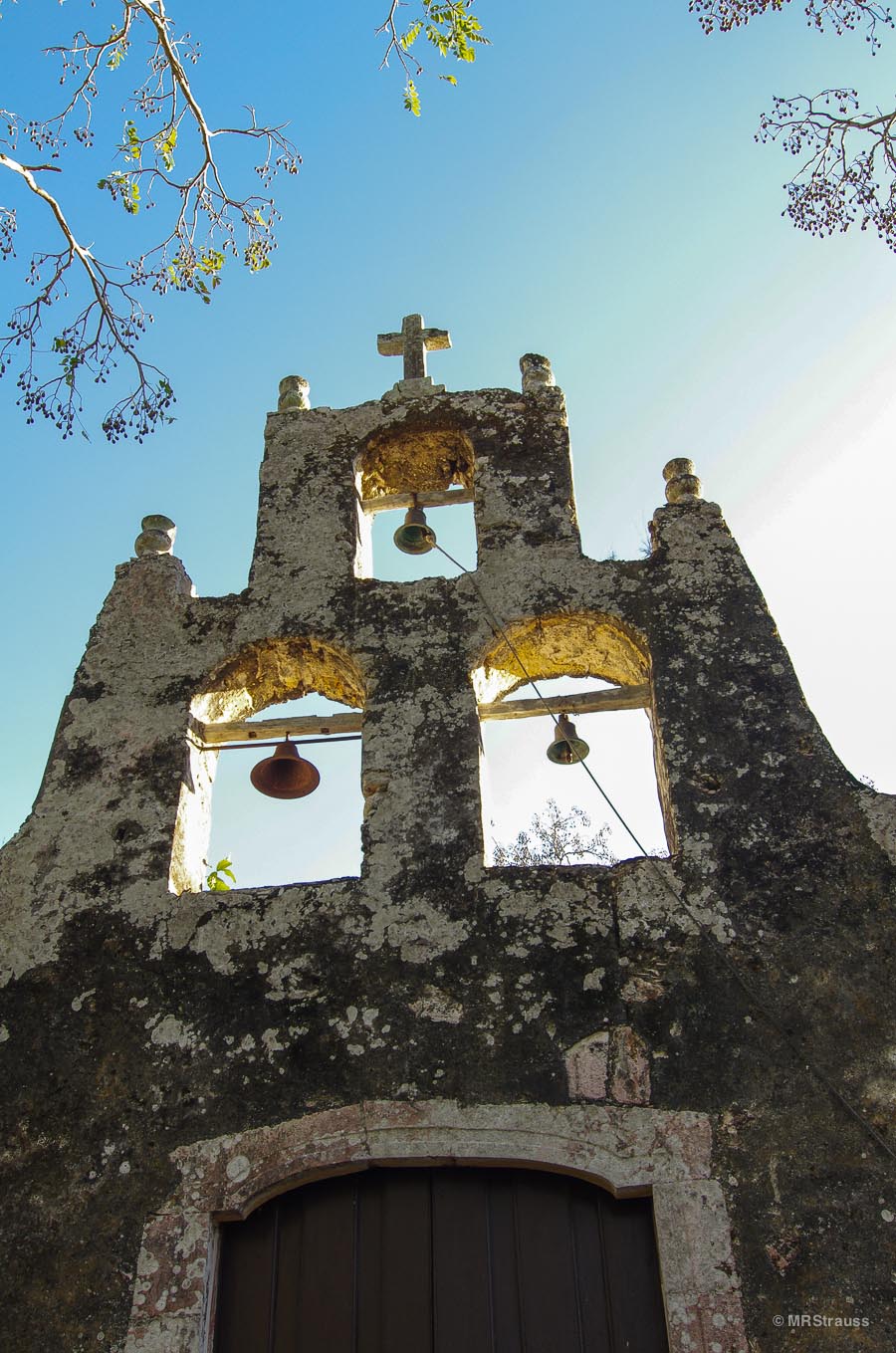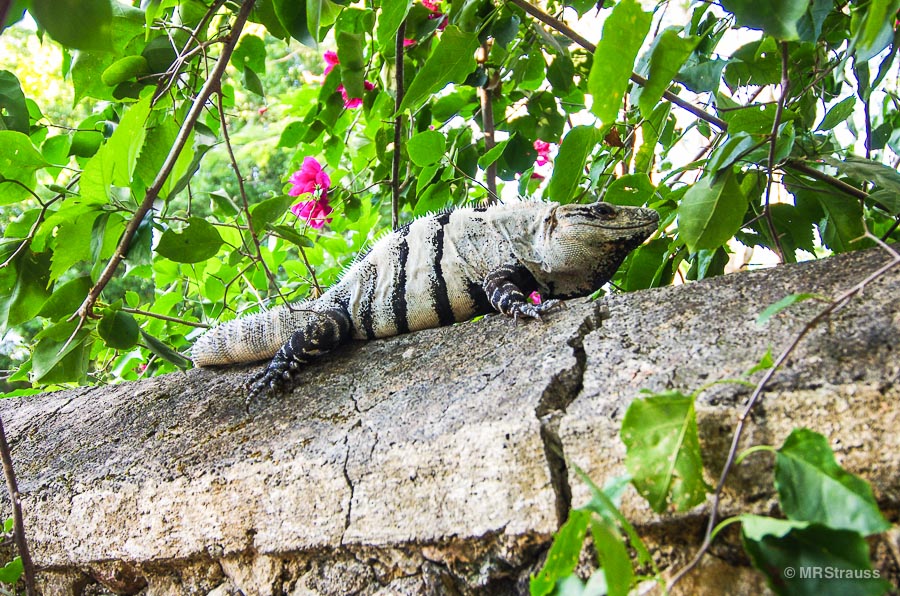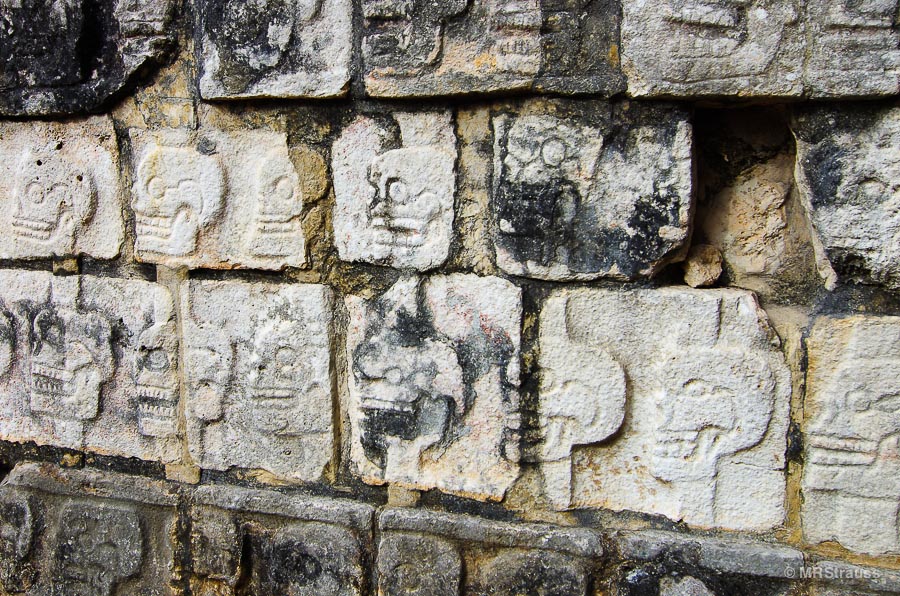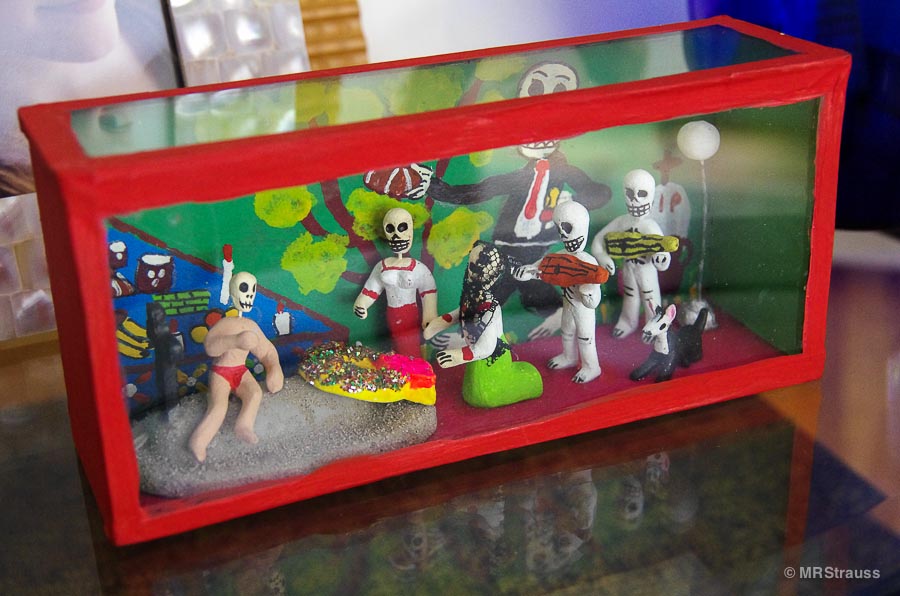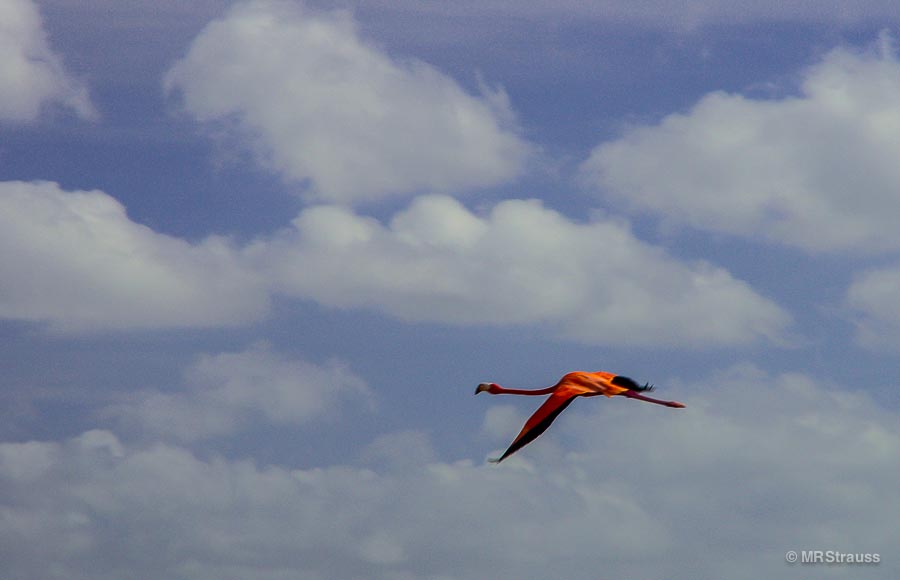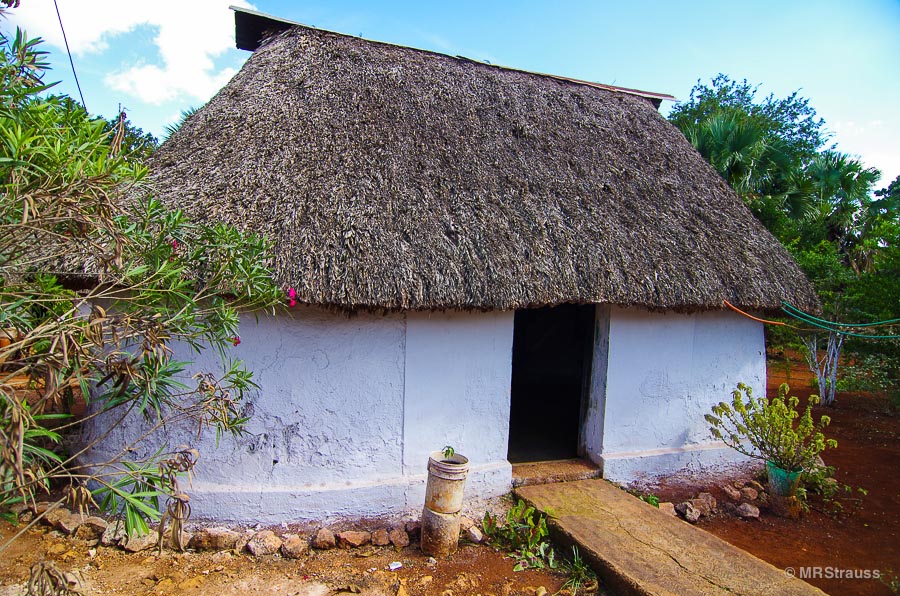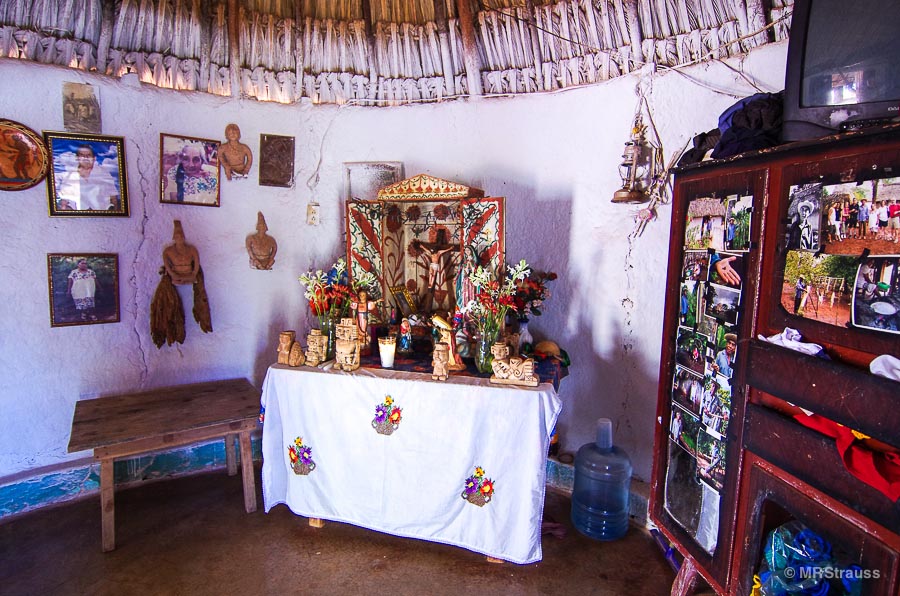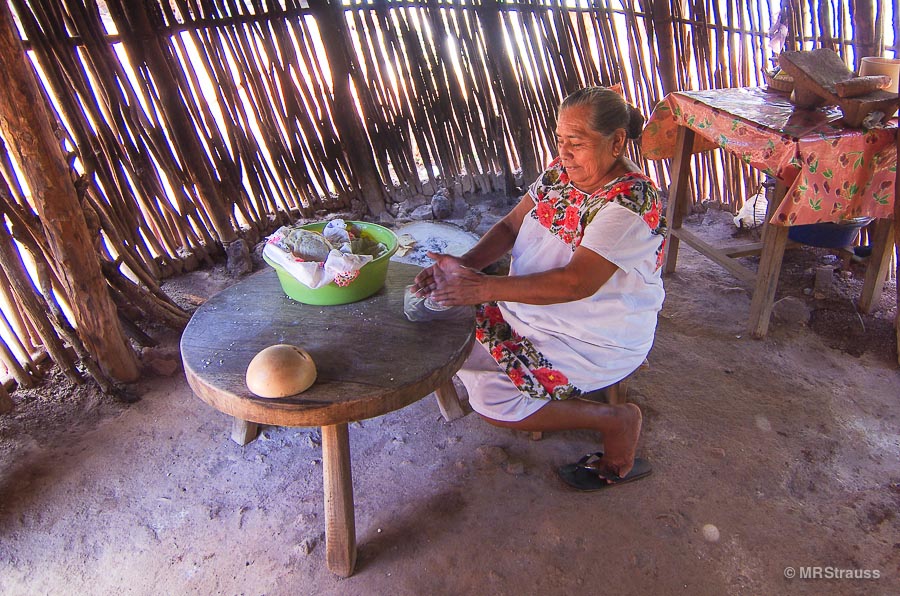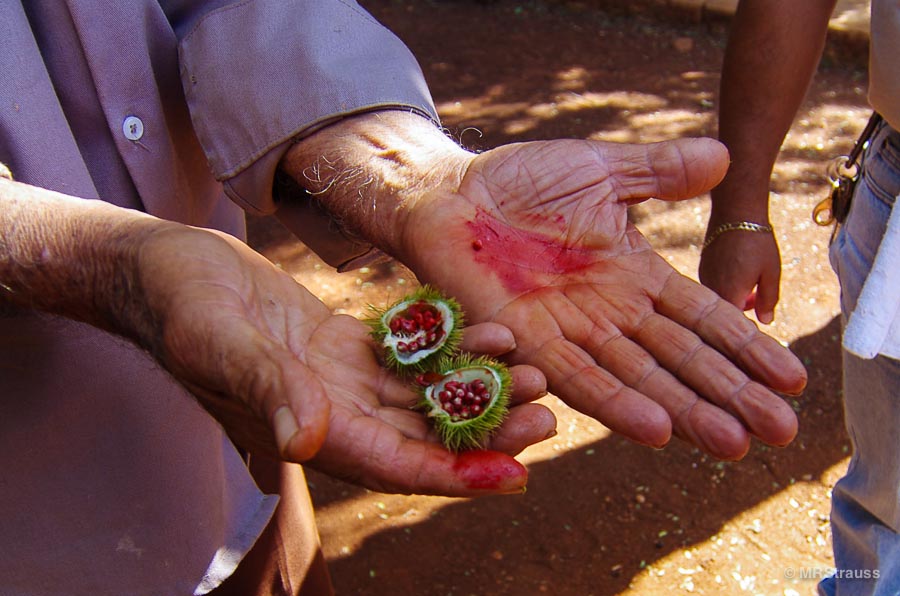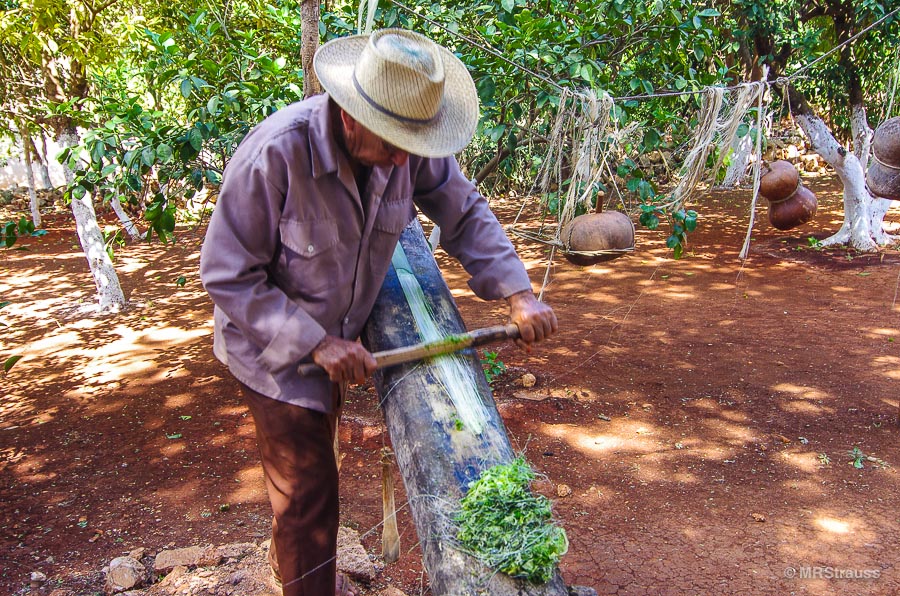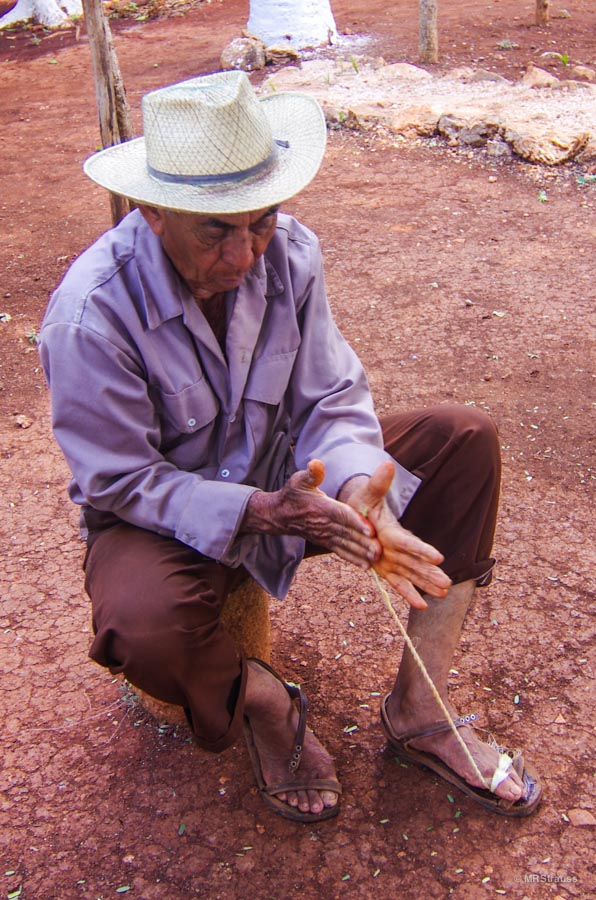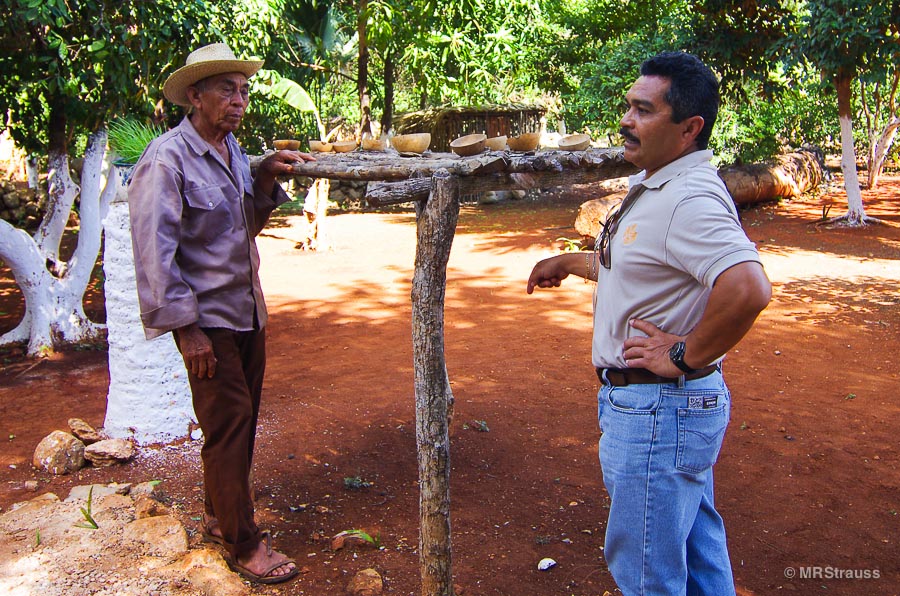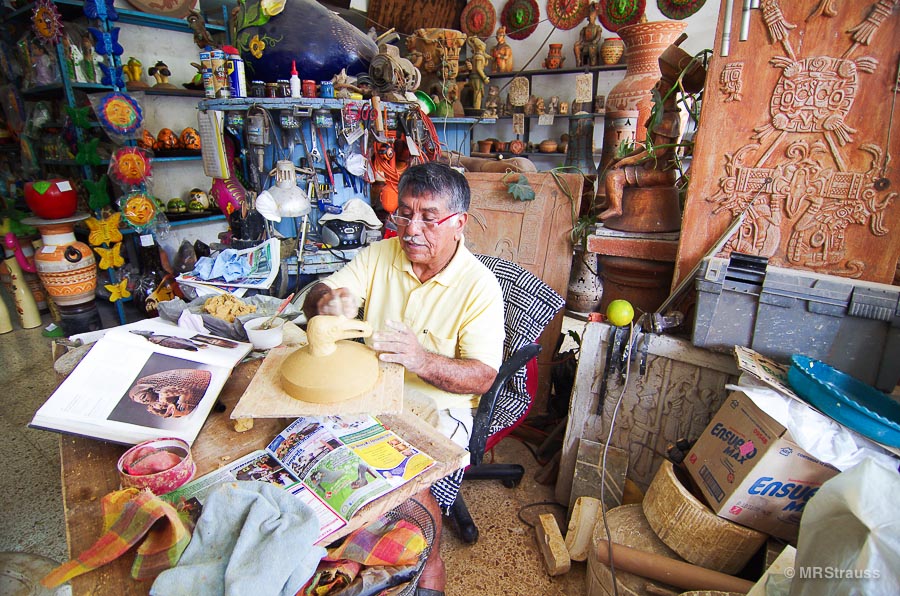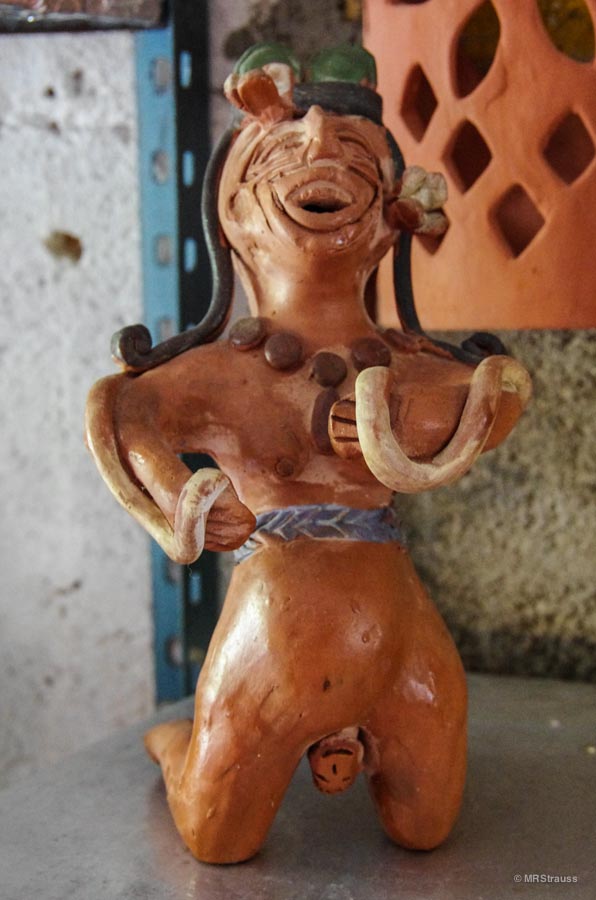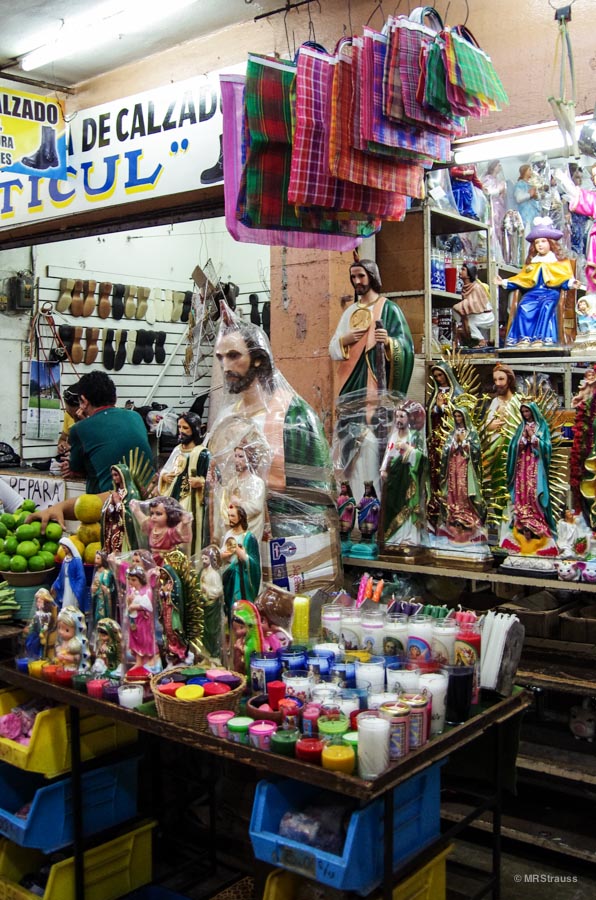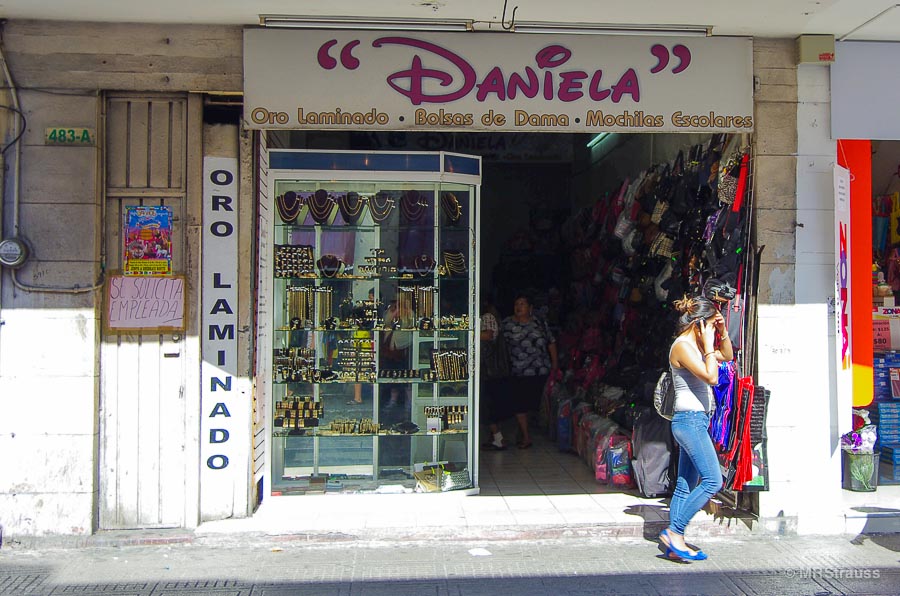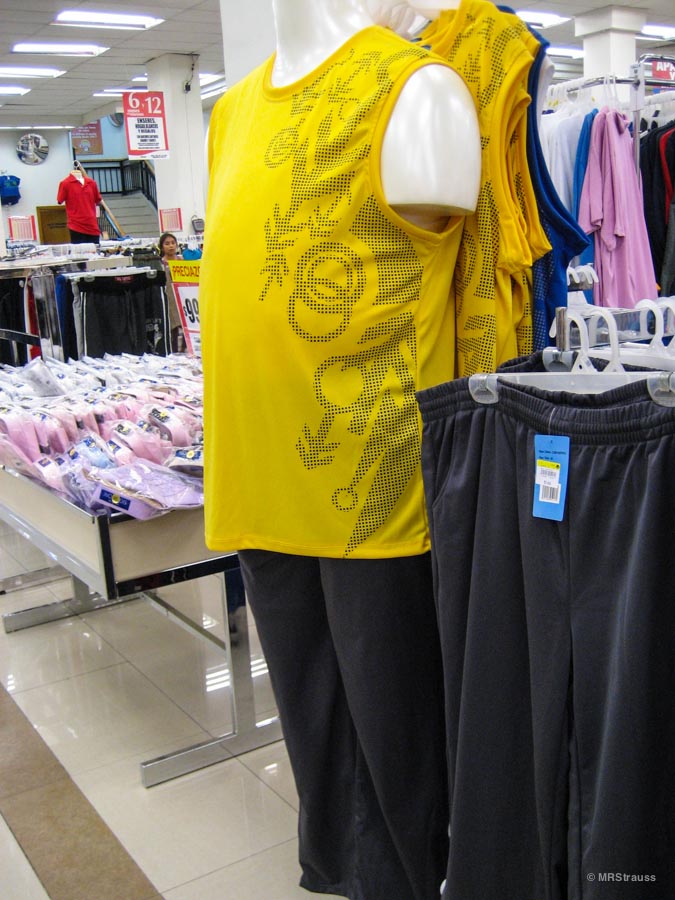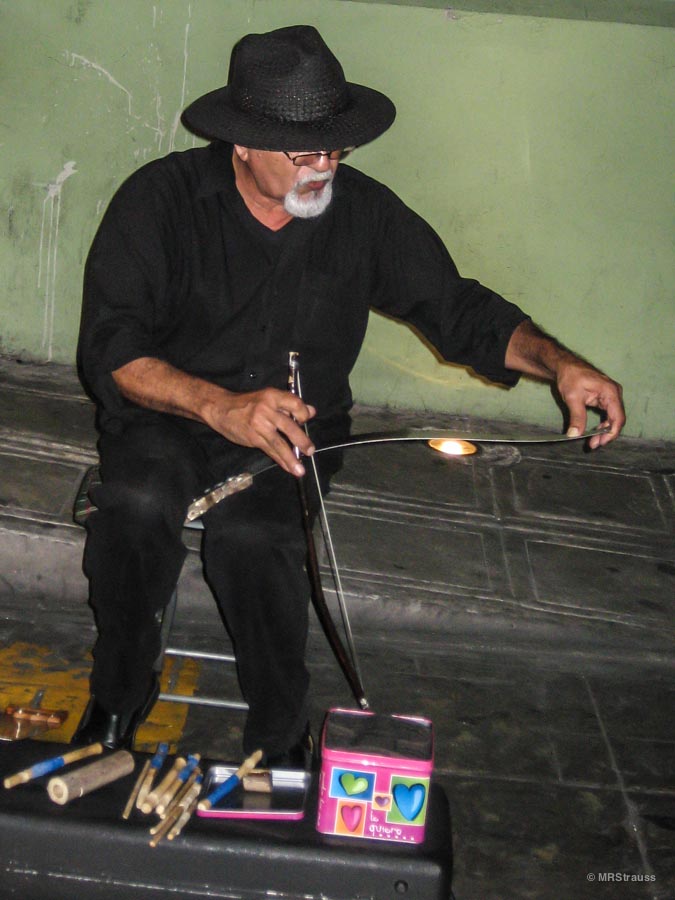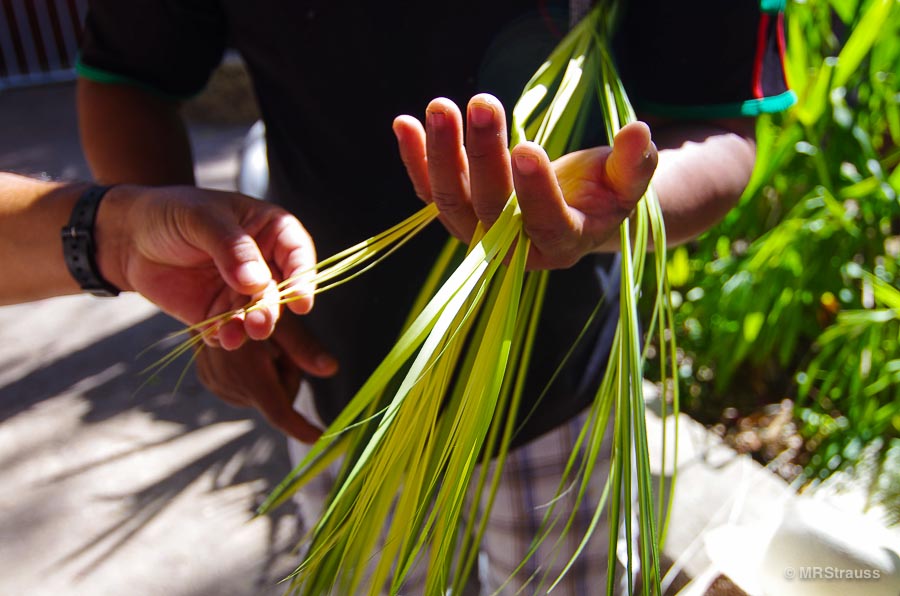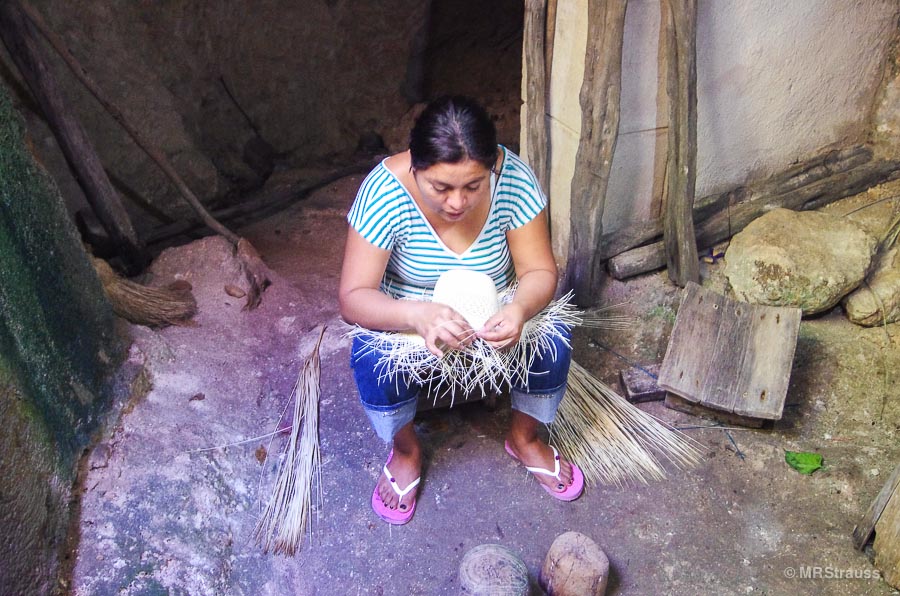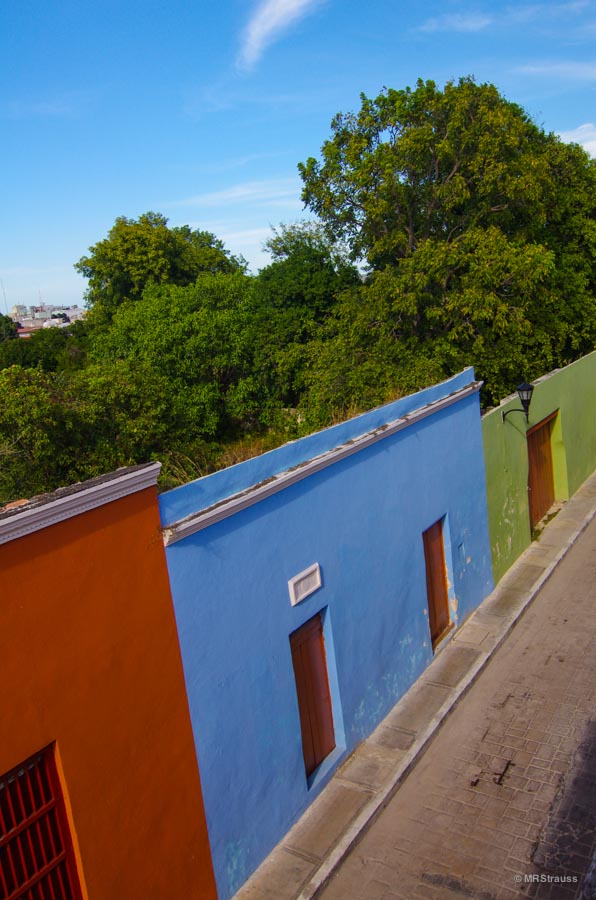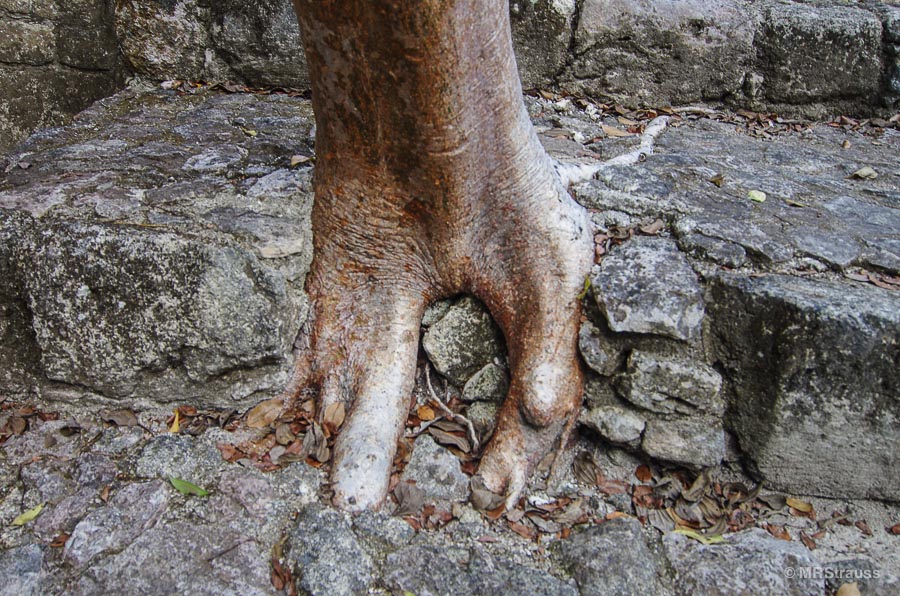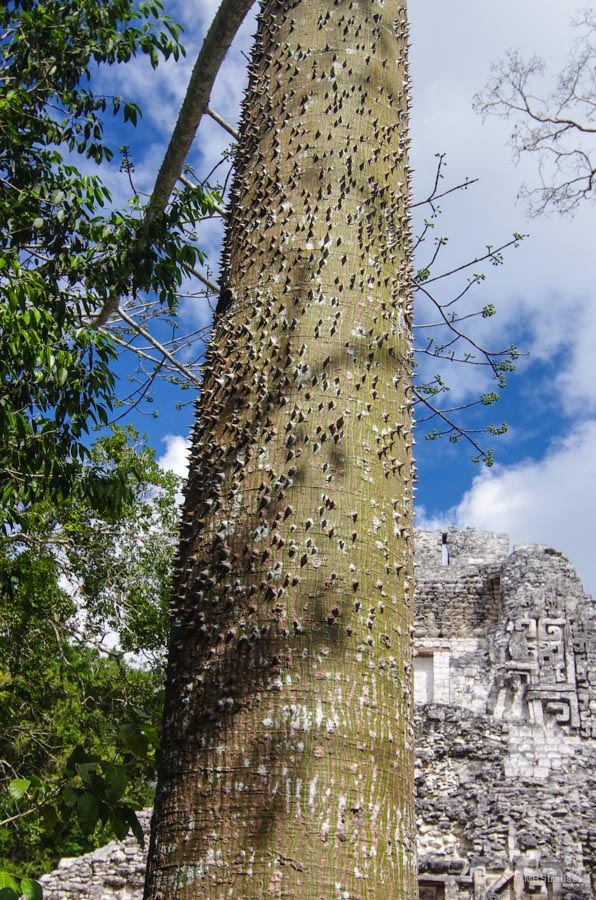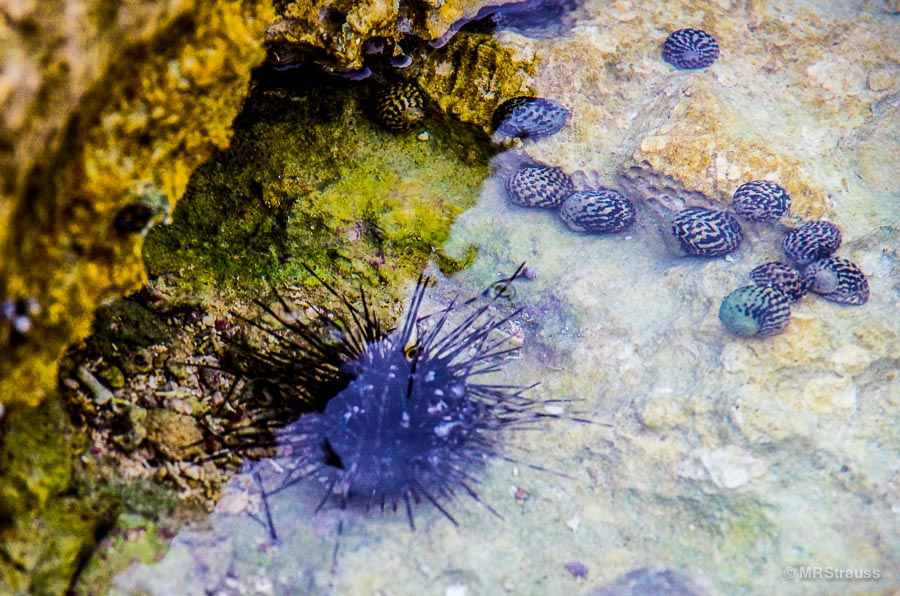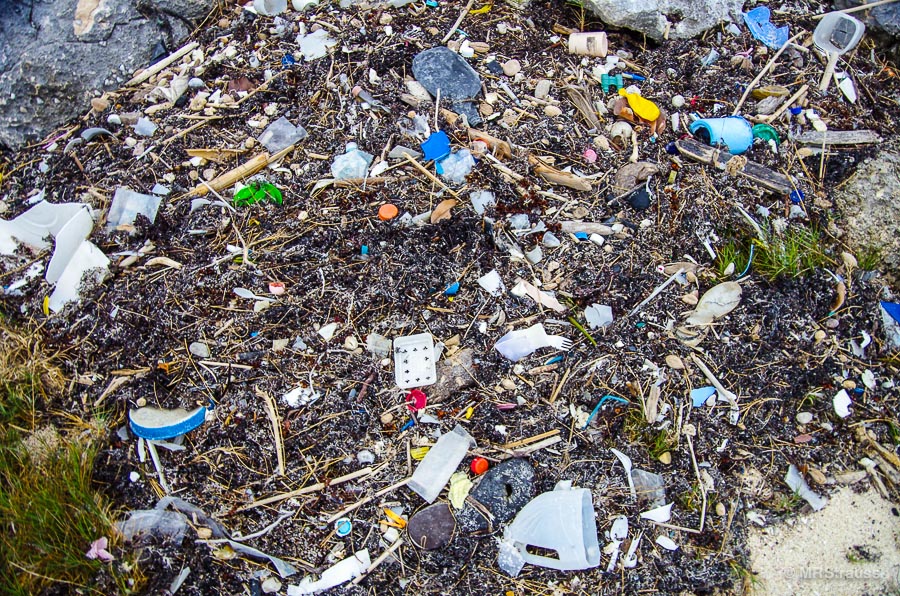We arrived in Cancún after the end of the world, so why they had to look through all our luggage was beyond me. The only thing that caught their attention was a bag of Peppermint Patties. Never pack Peppermint Patties, if they go soft, and ours did, you could attract the attention of airport security and end up a cautionary tale: stupid Americans shut down resort airport for hours with mint scented explosives. Luckily, after much serious deliberation and lots of fierce body language, they decided to simply dispose of the bomb in an ordinary trash can. And by the way, when airport security empties your bags, they don’t repack them for you. They stare at you while you do it.
We headed straight out of Cancún with our guide, Fausto Lugo, who will be with us for most of the next two weeks. No one can believe we’re going to miss Cancún, but I’ve seen the pictures and, to me, it looks a lot like Vegas with sand— all everyone is doing is drinking and buying Louis Vuitton— or they are in one of those hermetically sealed all-inclusives. Maybe I’m just jealous because I don’t look good in swimwear and I can’t hold my liquor, but I hope to at least attempt to experience México. I’m not known as an intrepid traveler and sometimes I really get confused, but I really try to put my toe in the stream of local culture and, as I travel more, I get a tiny bit better at it. The area we are traveling through, known as the Yucatán Peninsula, is rich in both Mayan and Spanish Colonial history and, over the next two weeks, we will make a big circle that encompasses Chichén Itzá, Mérida, Campeche, Calakmul, Soliman Bay and back out through Cancún. We do this during the ‘cool’ season in January which feels to me exactly like the ‘hot’ season here in the South. Our guide, who carries a towel tucked into his belt to wipe the sweat off and makes a beeline for shade trees at every site, confirms that, yes, this is the cool season.
It is just a two hour drive to Chichén Iztá where we spend our first night at the Hacienda Chichén. And where we are greeted with a glass of bright green chaya juice— every place we go we encounter food and drink that is so good we can’t believe we can’t get it at home. Chaya juice, which is usually mixed with a little pineapple juice, is green in all the right ways— refreshing without feeling like you may have had some lawn clippings. The main part of the hotel was part of an old hacienda, but our rooms were in newer bungalows with brightly colored hammocks on their little front porch. These weren’t the rough rope things from home that like to flip you onto the ground, these were softly woven cocoons. We got in them, and they were pretty nice, but we couldn’t quite see how how people would sleep in them all night (as we would see in our travels, many of the people in this area do sleep in hammocks, you can see them hanging in their homes, especially in the older thatched roof adobe ones). It wasn’t until later in the trip, when we visited the home of Don Hernán Perera Novero, that we realized why we weren’t blissed out laying in one: we were using them all wrong— you don’t lay in them end-to-end, but more like if the top of the hammock is 12 and the bottom 6, you put your head at like 10 and your feet at 4. You get into it by putting the far side over your left shoulder while standing up, pulling the rest underneath so you are sitting in the middle of it and then pivot to bring your feet in; you can even make it rock gently. Once we learned this, you couldn’t get us out (my daughter sees this and says “are you working for Ikea? Just say ‘lay in it at a diagonal.”)
One of the best things about Hacienda Chichén is that you can walk over to Chichén Itzá early in the morning and have the place almost to yourself until the buses from Cancún begin to arrive around ten. When you get there, you don’t really see the main pyramid from all the iconic pictures until you’re almost right up to it because the site is surrounded by forest, but it’s still pretty exciting as you start to see the bottom of it through the trees. I won’t go into all of the history of the site, you can easily get that, but it is, as many ancient sites are, planned to make use of astronomical events: the shadow of the corner of the main temple become the body of the serpent head you see at the bottom of the steps during the fall and spring equinoxes. Further on you see the famous ball court (this was the biggest and best-preserved ball court of all the sites we saw), the iconic Chac Mool at the Temple of the Warriors, and a strikingly modern-looking observatory. Other buildings featured serpents and skulls— all designed to inspire fear and awe (my kids though they looked more funny-scary— something that probably would have gotten their fool heads chopped off back then). The whole Chichén Itzá complex is well-preserved, making it a good first site to give context to some of the later, more ‘ruined’ sites we would see. If I ever come back, I’d visit the site at Ek-Balam and spend a night or two in colonial Valladolid.
I could have stayed at the Hacienda Chichén one more day to relax and explore the grounds a bit more, but our plan was to head for Mérida. On the way, we stopped at one of the famed cenotes that dot the limestone shelf the Yucatán sits on. The one hundred-thirty plus foot deep Cenote Ik Kil looks just as exotic as it does in pictures and I was really looking forward to swimming is such amazing scenery until I put my foot in and it froze and fell off; my kids got in and swam to the middle, waited for their lips to turn blue and swam back. We’re such babies. It wasn’t crowded, but the scene was a study in stereotypes— there were a few vigorous Germans swimming laps and a small group of life-jacket clad Asian tourists floating around taking pictures of themselves with their iPhones. The cold water didn’t seem to bother anyone else. From there we stopped in Tixkokob to see hammocks being made but we were out of luck. Apparently the Christmas holiday is so overwhelming here that everyone takes all of January to recover— I even see a Christmas tree in a hammock on someone’s porch. We did learn from one weaver about the the different qualities of hammocks and we did buy a ‘Mexican place’ of our own. You could also try Izamal for traditional hammocks and crafts. We didn’t have time, but Izamal is on my list for future trips.
Mérida is a classic Spanish colonial town laid out in a very easy to navigate grid set around the Plaza Grande (on a scale of 1 to 10 with New York City a 1 and Venice a 10, Mérida is a 2). Over the next few days, we would see very few tourists— here we really stick out. Our hotel, the very charming if somewhat street noisy Casa del Balam, is just three short blocks from the plaza. It is here in Mérida where we realize there is no such thing as ‘Méxican’ food. México has regional food just like we do. And just as you wouldn’t order Maryland crab cakes in Wisconsin, you don’t order fajitas in the Yucatán. The next night we found La Chaya which served traditional foods like salbutes, poc-chuc, and pollo pibil. All the flavors were so alien to me I can’t even form an opinion. Bright magenta pickled onions, something we would see on top of many things in the area, were a big hit from the start. Coming back from dinner at La Chaya, we come across the coolest gift shop ever— Miniaturas at No. 507 on Calle 59. They have all these strange, small handmade dioramas with skeletons playing different roles— my daughter chose one depicting a skeleton teacher with little skeleton students for her Spanish professor. They have all sorts of miniatures, folk art, tin work, ‘trees of life’ and much, much more in a densely packed and endless visual assault.
From our base in Mérida, we were able to explore a number of places. We spent a day watching the masses of pink flamingos in Celestún with their bright pink coral color set off perfectly by the aquamarine water. Another day we visited Uxmal, Kabah, and the caves at Loltun. Although the caves, called Grutas de Lol-Tun, are large and contain some hints of long-ago civilization, anyone who has visited the caves around Luray, Virginia is not likely to be impressed. Add to this that the guides, and you must use their guides, make endless references to all the special things they do for you and how little they get paid to do it (we heard the same from the guide of the group behind us— sound travels well in caves). Uxmal and Kabah, however, are completely unique sites. Where Chichén Itzá was all angles, the main pyramid at Uxmal is all curves and, according to myth, it was built overnight by the magician on a challenge from the king; the fanciful shape only lends credence to the story. To get a awe-inspiring view of the top of the Pyramid of the Magician (sometimes called the Pyramid of the Soothsayer or Dwarf) and a panorama of the whole of the complex, you can climb La Gran Pirámide at the back of the complex. Next, we visited Kabah. Although a small site, it is famous for the Codz Poop, a building wallpapered with mask of the rain god Chaac; a visualization that not only honors the god but expresses the desperation for rain in an area where rain is the only source of fresh water. We also see about a million iguanas.
It is on a side trip from Mérida that our guide takes us to meet Don Hernán Perera Novero and Doña Felicita Huchin Itzá somewhere near Santa Elena. They have dedicated their home to the preservation of Mayan culture. It’s hard to convey how special this place is: there are no signs, no gift shop, no release forms— nothing but a simple educational setting. You step into the traditional palapa roof adobe house —one of many we see still in use throughout the area— and with open doorways front and back, you immediately feel the cool air; this house was designed to have natural air conditioning. Señor Novero (through our guide) told us about how the roof is constructed to keep out rain and then demonstrated for us the proper was to use a hammock, which is completely different than anything you see in travel pictures. In the corner of the house, there is an alter mixing Catholic icons with Mayan deities, a visually hypnotic sight, which is traditional in the Yucatán. Man, I really wish this were my house; with the smooth adobe floor and the hammock for a bed, cleaning would be done in five minutes. In an almost identical hut behind the house Señora Itzá grinds corn and makes tortillas on a convex steel griddle set over a wood fire. We tried some of these fresh, soft tortillas as a snack with ground pumpkin seeds and some scorching green salsa. I had bragged that I like really spicy stuff so I had to stand there and pretend didn’t bother me at all while it cleaned out all my pores.
As we walk around the property, Señor Novero shared some of his extensive knowledge on regional and medicinal plants. He has tobacco, which he says keeps insects away, cotton, annatto, peppers, and many others that defy translation from Mayan; I would have to come back with a field guide. We were shown how the fiber from the henequen (a type of agave) is extracted to make rope; this was the primary industry in the Yucatán, and the reason for which the haciendas (think plantation) were built during the 1800’s. He then gave a us the highlights of the very complex religious ritual Ch’a Chaak, still used today, to ask the gods for rain. If I got this right, they ask the Mayan gods, Christian saints, and even their ancestors for help; every single step of the ritual, from the orientation of the alter to plants used, has meaning and purpose. If I were one of their gods, and they did this for me, they’d have all the rain they want. The area is also known for it’s pottery; on our way back to Mérida, we visit a pottery studio specializing in reproductions of traditional Mayan designs. It is here that I see the weirdest thing ever: a statuette of what appears to be a deranged woman/god/creature giving birth.
It is interesting just to walk around Mérida— the colors, the people. One day, after filling up on horchata and people watching in the Plaza Grande, we headed for the massive Mercado Lucas de Gálvez just south of the Plaza Grande. We spent most of the day here visiting food stalls and looking at the odd collection of shops; you can get everything here: turkey jerky, life size statues of Jesus, sneakers, phones, everything. There are also tons of Disney characters and riffs on the Disney theme everywhere. If I had known the Disney theme was so big, I would have taken more pictures of all these handmade homages. If Disney ever builds a theme park in México, half the people would faint from excitement. Oh darn, my local market fantasy gets killed: we come to a shop selling puppies and it’s not good; they’re in small cages and they look sickly. I took a couple of photos but they didn’t come out well. There were other things too, such as really young kids selling stuff, but these puppies looked really bad. We headed back later to look again, but they had closed. What can you do? If I were home, I would have called animal control.
At night, the Centro Historico really comes to life. After getting some more horchata and some hot churros, all we had to do for entertainment was walk around: a man making music with a saw, a spray paint street artist who uses fire as a finishing touch (and amazingly doesn’t blow up the whole plaza), a remarkably realistic store mannequin, and a Catholic church so busy that one bride was just leaving in her calesa as the next one was entering the church. The second bride was actually sitting in her bridal car during most of the ceremony for the first bride.
The next day we were off to Campeche, but not before stopping in Becal to see Jippi (aka Panama) hats being created. The weavers work in small limestone caves because the humidity keeps the reeds pliable. The thickness of the reed determines how soft and pliable the hat will be; the more expensive ones are so fine they almost look like woven cloth and they feel like butter. The city of Campeche is a step up from Mérida in the Spanish Colonial theme: the gulf-side town is surrounded by a defensive wall, parts of which you can walk on, and anchored by two forts decked out in iron cannons. Our one night here is spent in the recently renovated, throughly charming, and again somewhat street noisy (the cobblestone streets seem to be the culprit) Hotel Castelmar located within the old city walls. At Puerta de Tierra (land gate) we were able to walk on the ramparts of part of the old city wall, see where the guards went potty, and take in a strange, yet brilliant sight: Campeche, having fallen on hard times, decided there was no need to look that way and decided to hide their urban decay behind beautiful facades. From on top of the wall, you can peek over the facades and see the dilapidated weed-infested ruins.
The Fuerte de San Miguel, which also houses the Museo de Arqueología, was our chance to get our pictures taken with big cannons and take in the endless views of Campeche and the Gulfo de México. The real surprise though was the beautiful, but not overwhelming, collection of Mayan artifacts in the museum. The highlight was one particularly evocative and intricately created jade death mask from Calakmul— something I wanted to see since we would be heading there next. All this sightseeing made us very hungry. We headed to the locals-filled La Parroquia (we won’t see many tourists in Campeche either) where we immediately ruin our dinner by scarfing down a plate of Richaud charritos topped with pickled onions and huge goblets of fresh juice. And just as Mérida did, the main plaza in Campeche comes to life at night with church services, what looked like bingo played with glass beads, and tons of people. The city used to hide in tunnels during pirate raids, but now pirates are their calling card: an image of a one-eyed scallywag adorns all their tourist trinkets. My daughter scores a t-shirt proclaiming her pirate status. I end up with ice cream from a little hole-in-the-wall McDonald’s that only serves dessert on the main plaza because they have a never-before-seen Oreo cone. Yum. I always try to stop in McDonald’s when I travel and I always find something interesting that I never see back home. The next morning it was time to leave Campeche. I wish I could have had at least one more day to just explore the small, almost traffic free, city and contemplate all of the interesting pieces of modern sculpture dotted throughout. I’m not sure if this was a temporary show or a permanent installation, but I’ve never seen so much public art. I also would have loved to go to the huge mercado just outside the city walls now that I had some market practice in Mérida.
From here, most folks head south to Palenque and perhaps the murals Bonampak. We headed east to Calakmul, a somewhat recently excavated and remote Mayan site set deep in the jungle of the Calakmul Biosphere Reserve. En route we stopped for lunch at Restaurant y Hotel Calakmul where, despite the unpromising setting, I had my favorite meal of the trip: light and tender meatballs stuffed with hard-boiled eggs and smothered in a sort of smoky chipotle sauce with arroz (rice). Here we stayed at the comfortably rustic Hotel Puerta Calakmul; an eco-lodge just inside entrance to the reserve. We needed an got a wonderful dinner and a good night’s sleep so we could be ready to leave at six in the morning. Why? Because it is another hour and a half from here to the site and we wanted to see the monkeys and any other wildlife while they were still active. Only people waste their energy in the heat of the mid-day sun— animals nap. We did see a group of monkeys at the site and they were really swinging around but it was a little hard to see them up in the tall trees. The site is not as cleared as Chichén Itzá, Uxmal, or Kabah, so it’s hard to get a sense of its enormity. Several structures have large trees growing out of them; their roots so deep that trying to remove them would cause further damage. The highlight is climbing the approximately 390 ft Gran Pirámide for a view of jungle as far as the eyes can see (and as far as the binoculars can too). I’ve never seen so much green. Some people say you can see the top of the Danta pyramid at El Mirador in Guatemala, but we weren’t able to pick it out. Climbing down these pyramids can be scary because they are so steep each step looks like the edge. Don’t worry if you’re afraid of heights, just crawl down backwards like a baby—that’s what I did. It’s the tree-root loaded flat ground around the pyramid that you need to watch out for. I tripped and nearly took our guide down with me. Many people talk about how incredible Palenque is; having not seen both, I can’t compare them. However, if you like an undiscovered jungle kind of vibe, then Calakmul, for the time being at least, is for you.
While we could have used another day in Calakmul to explore some of the trails in the biosphere, we had already planned to head to the Laguna Bacalar near Chetumal. On the way we stopped at two smaller and somewhat more ruined but worthwhile sites: Becán and Chicanná. Becán has a small, but well-preserved section of original carving featuring the other-worldly image of the sun god Kinichná. The small traces of original paint make it seem as if it is trying to reach out across the eons. What a brilliant place this must have been. Our time may be preserved for the ages by our digital presence, but with our glass boxes and blacktop, will any sort of emotion travel into the future? What I wouldn’t give to see just one of these places in their heyday even for just fifteen minutes. At Chicanná, we see a really fierce looking structure called the House of the Serpent Mouth; with sharp teeth all around the entrance it looks as if you are literally walking into the serpent’s mouth— a great photo-op for the kids (there is a mouth door at Chichén Itzá, but it is not as ‘toothy’). Contrary to popular belief, It was not the Spanish who caused the downfall of the Mayan cities; they were already in ruin or on their last legs. Just as it did for the American Indians of the southwest, it is believed my many that prolonged drought and depletion of resources, which in turn would have exacerbated wars and disease, slowly ground down the great Mayan cities. Amazingly, the Spanish conquest seems to have mostly positive reviews from the folks I meet. They spoke of their reverence for the Catholic Church, which is clear at every turn: from packed church services, to crosses everywhere—even in our hotel rooms— and religious supplies and icons proudly displayed in every market. One person I spoke with pointed out that it was different here— the Mayans were not driven onto desolate reservations. Even now, most of the people here resemble the carvings I see at the ruins more than the Spaniards. If I came this way again, I would visit Kohunlich which appears to have some well-preserved stucco masks.
Sweaty and tired, we headed for Akal-ki, a hotel that looks like something out of Tahiti on it’s website. They consider themselves an eco-lodge, which has come to mean no air conditioning. This was fine— I actually enjoy not having it unless it’s oppressively hot and humid. But they take it a step further: electricity, which is provided by eco-unfriendly and noisy generators, is shut off sometime around midnight and does not go back on until—I don’t know when since we left the next morning. I guess the idea seems very eco-edge, but as soon as the ceiling fans stopped, the poorly sealed hut was overrun with humidity, bugs, and mosquitos. I usually have nightmares about spiders, but that night I had to kill a real one by candlelight—actually a hotel provided tea light and a hot one at that. The LED flash light brick thing they provided only gave off an eerie glow that just made shadows of everything. I hate it when camping and staying in a hotel get smushed together. This was the difference between this place and the very comfortable eco-lodge in Calakmul which also had thatched roof huts: they paid careful attention to to sealing the screens to keep most bugs out and kept power use down using a mix of LEDs and compact fluorescents rather than cutting the power completely. Being able to have the fan on low overnight kept the bugs and humidity at bay. Although the almost bath temperature lagoon was very pretty, I wouldn’t stay at this hotel again. I can’t even remember what we had for dinner at the very romantic over-water restaurant because we were almost consumed by mosquitos as soon as the sun went down. I probably even ate a few. The next morning our guide looked at my welted legs and said “what happened to you?” If I had to do this again, I would probably give Hotel Rancho Encantado a chance.
I realized the trip was winding down when we had to confirm the times for our flight back home. Our last stop would be Bahía Soliman near the Sian Ka’an Biosphere. Bahía Soliman is one of those places you see on posters that have the word ‘relax’ written across the bottom and this time we had the hotel to match: Jashita. With the beautiful, calm, azure, reef-protected water, we fit in all our water fantasies here: kayaking, snorkeling, paddle boarding. We were glad we had our water shoes, though, as there is a lot of sharp coral both on the beach and in the water. We visited the very crowded ruins at Tulum, which, after everything we’ve seen, weren’t very impressive; the view from the site is no where near as dramatic as the one from the water often seen in photos. Damage from crowds has made it necessary to keep people a good distance from the structures. This was one place where our early morning strategy of avoiding crowds didn’t quite work. If I had to do this again, I would set out early for the Reserva de Monos Arañas de Punta Laguna for a chance to catch some wildlife and then onto Cobá where it says you can ride bikes around the ruins.
We spent most of the next day visiting the super-ruined Muyil and the Centro Ecologico Sian Ka’an; a vast wildlife preserve on the Carribbean Coast that features a clear white sand bottom lagoon (similar to the one in Bacalar) and miles of coastline and coral reef. It is said that all five of the areas wild cats can be found there (Margay, Ocelot, Jaguarundi, Jaguar, and the Puma) as well as some smaller mammals, turtles, dolphins, crocodiles, manatees, and numerous birds. The part of the preserve where we were, though, was strangely devoid of any wildlife given how few people were around. The preserve extends out to the sea past the clear bay and canals where we were, so maybe there is more wildlife in that area. Could also have just been an off day. My kids did like the lazy river where they floated wearing their life jackets upside down in a mangrove-lined canal that had been carved out by Mayans ages ago. Our last day was spent relaxing on the beach at Bahiá Soliman. I could see from the beach what looked like a shelf extending out from the north edge of the bay and I wanted to explore. We walked to the edge of the bay to find a coral-encrusted shelf teeming with tide pools. We saw sea urchins, lots of little fish, colorful snails, crabs, calcified corals, sea fans, and, in some spots, unfortunately, a lot of washed-up garbage.
All things must come to an end, good ones especially it seems. On the way through airport security, with no Peppermint Patties to confiscate, they throw out my half empty 3.6 once face mask. My fault. It seemed like they made sure they got something from everyone, although the guy ahead of me who had a liter of Jack Daniels confiscated when he couldn’t produce his duty-free receipt, really paid a big price. The trash can nearly tipped over when they threw it in. I wonder if the security folks get to take all this stuff home?
Traveling is like being a newborn baby. you see so many things for the first time, it’s hard to take it all in. I hope I get to go back, and I say this about all the places I’ve been to only once, so that I can make sense of everything.
Guide: Fausto Lugo
Guidebook: The Rough Guide to the Yucatán
Copyright © 2013 MRStrauss • All rights reserved

